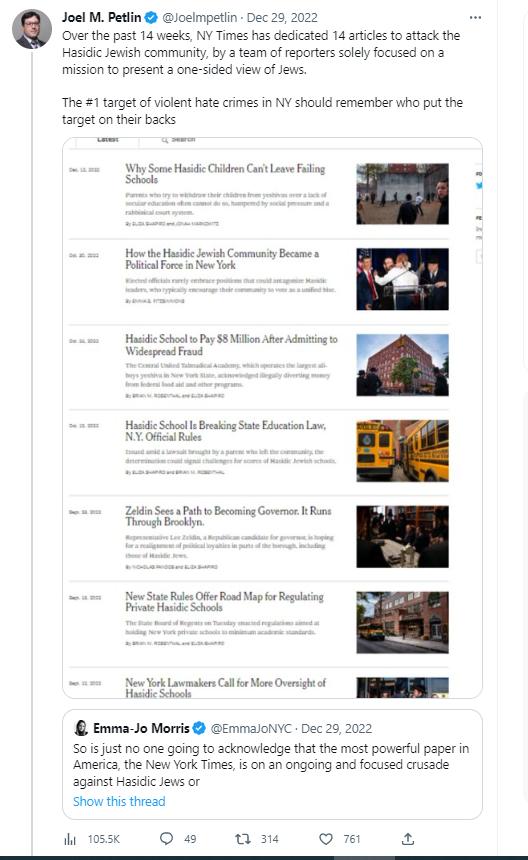NY Times and WaPo Continue Smear Campaign Against Orthodox Jews As Antisemitic Hate Crimes Surge

Orthodox Jews were a trending topic on Twitter last week. Their ranking was boosted by a one-two punch from the press — hit pieces against the religious Jewish community from both the New York Times and the Washington Post.
The hostile coverage comes amidst growing alarm over anti-Semitic hate crimes in the city, overwhelmingly affecting Orthodox Jews and Hasidim.
The Times piece was yet another attack on Hasidic schools—we covered one in September here—this time about the administration of special education services.
And the Washington Post revived the medieval Jews-are-vectors-of contagion libel by featuring pictures of New York Hasidim — in an article mainly about disease outbreaks in Ohio and elsewhere.
The paper later revised the featured photo.
The media onslaughts are brought to us by the same people who fret over the potential for violence incited by “problematic” “hate speech” on Twitter now that Elon Musk took over. But their campaign shows no signs of stopping, even in the wake of a dramatic surge in actual violence against the New York Orthodox Jewish community targeted by the media.
Jewish advocacy groups have had enough and are hitting back. The newly formed KnowUs.org, a project of the Agudath Israel of America, has launched a billboard campaign against the Times‘s attacks on the religious community:
Of course, the correlation between the serial hit pieces and the surge in hate crimes doesn’t necessarily prove causation. But by now the paper’s readers have gotten the message: bigotry gets a free pass when its target is Orthodox Jews.
And considering its history of covering up the Holocaust, the New York Times has a lot to apologize for.
Rabbi Yaakov Menken, managing director of the Coalition for Jewish Values, takes the Times to task for the timing of its attacks: “It is very clear that the NY Times would never target another minority group in this fashion, certainly not at a time when that same minority is being targeted for hate crimes like no other on the streets of the city,” he says. “No one can read, or subscribe, much less work for the NY Times, and wonder how Der Sturmer became so popular in Germany.”
CLICK HERE FOR FULL VERSION OF THIS STORY

